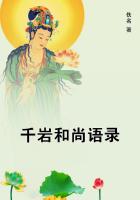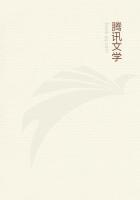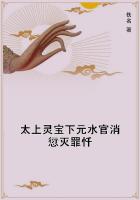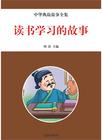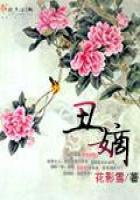Galen died about 200 A.D.; the high-water mark of the Renaissance, so far as medicine is concerned, was reached in the year 1542. In order to traverse this long interval intelligently, I will sketch certain great movements, tracing the currents of Greek thought, setting forth in their works the lives of certain great leaders, until we greet the dawn of our own day.
After flowing for more than a thousand years through the broad plain of Greek civilization, the stream of scientific medicine which we have been following is apparently lost in the morass of the Middle Ages; but, checked and blocked like the White Nile in the Soudan, three channels may be followed through the weeds of theological and philosophical speculation.
SOUTH ITALIAN SCHOOL
A WIDE stream is in Italy, where the "antique education never stopped, antique reminiscence and tradition never passed away, and the literary matter of the pagan past never faded from the consciousness of the more educated among the laity and clergy."[3] Greek was the language of South Italy and was spoken in some of its eastern towns until the thirteenth century. The cathedral and monastic schools served to keep alive the ancient learning. Monte Casino stands pre-eminent as a great hive of students, and to the famous Regula of St. Benedict[4] we are indebted for the preservation of many precious manuscripts.
[3] H. O. Taylor: The Mediaeval Mind, Vol. I, p. 251.
[4] De Renzi: Storia Documentata della Scuola Medica di Salerno, 2d ed., Napoli, 1867, Chap. V.
The Norman Kingdom of South Italy and Sicily was a meeting ground of Saracens, Greeks and Lombards. Greek, Arabic and Latin were in constant use among the people of the capital, and Sicilian scholars of the twelfth century translated directly from the Greek.
The famous "Almagest" of Ptolemy, the most important work of ancient astronomy, was translated from a Greek manuscript, as early as 1160, by a medical student of Salerno.[5]
[5] Haskins and Lockwood: Harvard Studies in Classical Philology, 1910, XXI, pp. 75-102.
About thirty miles southeast of Naples lay Salernum, which for centuries kept alight the lamp of the old learning, and became the centre of medical studies in the Middle Ages; well deserving its name of "Civitas Hippocratica." The date of foundation is uncertain, but Salernitan physicians are mentioned as early as the middle of the ninth century, and from this date until the rise of the universities it was not only a great medical school, but a popular resort for the sick and wounded. As the scholar says in Longfellow's "Golden Legend":
Then at every season of the year There are crowds of guests and travellers here;
Pilgrims and mendicant friars and traders From the Levant, with figs and wine, And bands of wounded and sick Crusaders, Coming back from Palestine.
There were medical and surgical clinics, foundling hospitals, Sisters of Charity, men and women professors--among the latter the famous Trotula--and apothecaries. Dissections were carried out, chiefly upon animals, and human subjects were occasionally used. In the eleventh and twelfth centuries, the school reached its height, and that remarkable genius, Frederick II, laid down regulations for a preliminary study extending over three years, and a course in medicine for five years, including surgery. Fee tables and strict regulations as to practice were made; and it is specifically stated that the masters were to teach in the schools, theoretically and practically, under the authority of Hippocrates and Galen. The literature from the school had a far-reaching influence. One book on the anatomy of the pig illustrates the popular subject for dissection at that time.[6]
The writings, which are numerous, have been collected by De Renzi.[7]
[6] "And dissections of the bodies of swine As likest the human form divine."--Golden Legend.
[7] S. de Renzi: Collectio Salernitana, 5 vols., Naples, 1852-1859; P. Giacosa: Magistri Salernitani, Turin, 1901.
The "Antidotarium" of Nicolaus Salernitanus, about 1100, became the popular pharmacopoeia of the Middle Ages, and many modern preparations may be traced to it.
The most prominent man of the school is Constantinus Africanus, a native of Carthage, who, after numerous journeys, reached Salernum about the middle of the eleventh century. He was familiar with the works both of the Greeks and of the Arabs, and it was largely through his translations that the works of Rhazes and Avicenna became known in the West.
One work above all others spread the fame of the school--the Regimen Sanitatis, or Flos Medicinae as it is sometimes called, a poem on popular medicine. It is dedicated to Robert of Normandy, who had been treated at Salernum, and the lines begin: "Anglorum regi scripsit schola tota Salerni . . . " It is a hand-book of diet and household medicine, with many shrewd and taking sayings which have passed into popular use, such as "Joy, temperance and repose Slam the door on the doctor's nose." A full account of the work and the various editions of it is given by Sir Alexander Croke,[8] and the Finlayson lecture (Glasgow Medical Journal, 1908) by Dr. Norman Moore gives an account of its introduction into the British Isles.
[8] Regimen Sanitutis Salernitanum; a Poem on the Preservation of Health in Rhyming Latin Verse, Oxford, D.A. Talboys, 1830.
BYZANTINE MEDICINE

